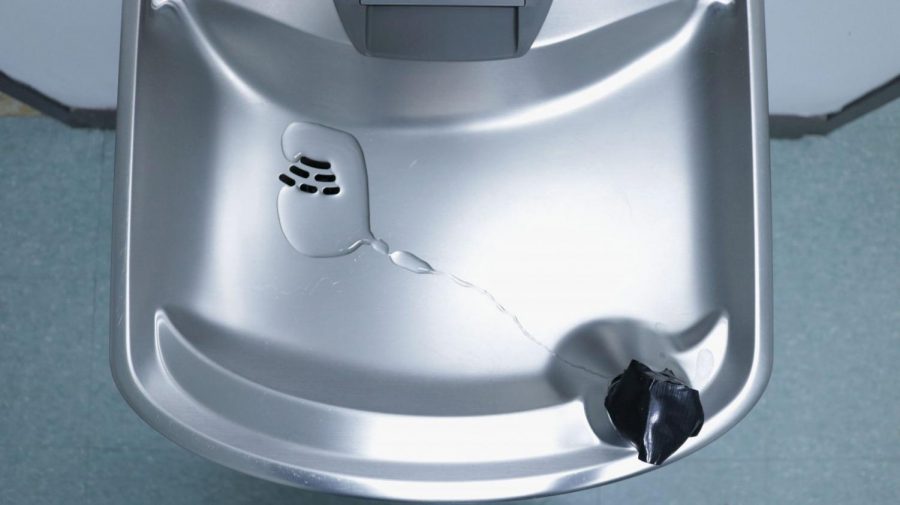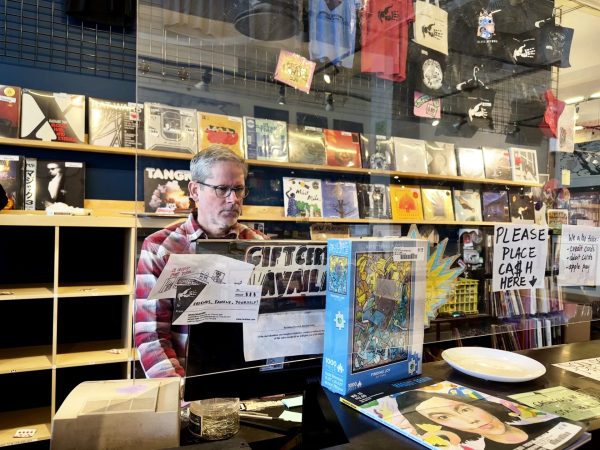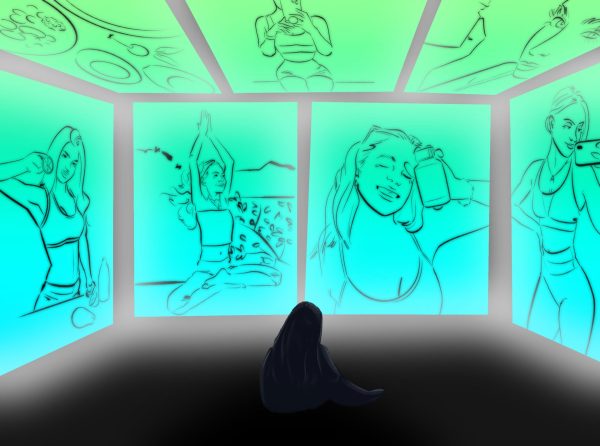OPINION: Open up the water fountains
Water fountains on DePaul’s campus have been covered up by tape, plastic bags, or simply disabled.
Drinking fountain, water fountain, bubbler — whatever you want to call it, it’s something that should be back on campus by now. Though the precautions from Facility Operations are understandable, a step towards making campus normal again should be opening up the water fountains.
Regardless, the choice of whether or not to use water fountains should be put in the hands of the drinker. Although people should lean towards using refillable bottles, there just aren’t enough water bottle fillers available on campus yet.
In May of 2020, the Center for Disease Control advised schools that “drinking fountains should be cleaned and sanitized, but encourage staff and students to bring their own water to minimize use and touching of water fountains.” In their Guidance for Institutions of Higher Education, the CDC does not provide any updates but mentions less strict overall rules for schools where most are vaccinated.
DePaul has a 99.4 percent vaccination rate on campus among students, 99.68 percent among faculty and 96.9 percent among staff. These numbers show that almost all the time you would be using a water fountain after a person who is vaccinated. As “a growing body of evidence suggests that people who are fully vaccinated are less likely to have asymptomatic infection or transmit the virus that causes COVID-19 to others,” according to the CDC, there is far less to worry about with water fountains.
Following guidance from the CDC, Facility Operations “deactivated water fountains in early 2020,” Vice President of Student Affairs Gene Zdziarski told The DePaulia in an email. “Water fountains will be reactivated as soon as CDC guidance allows for such. In the meantime, faculty, staff and students are encouraged to bring reusable water bottles to utilize the many refill stations on campus.”
The CDC has not released anything suggesting more than just disinfecting drinking fountains and cleaning out the water lines. Reusable water bottles are always a good suggestion though. It still is an inconvenience due to water bottle fillers not being on every floor, specifically in the CDM building.
For floors where there are no water bottle fillers, a drinking fountain should be open for use.
Arguments for closing drinking fountains made sense in the panic that was spring of 2020 when the water fountains were turned off at DePaul. But it didn’t take long for the CDC and a lot of public spaces to open water fountains back up.
“When the pandemic began in March 2020, we had no idea how [Covid-19] spread,” said Craig Klugman, a professor in the Department of Health Sciences at DePaul. “At that time we were wiping down every surface, wiping down our groceries; I even remember a little device that would turn a door handle for you. As we have learned about the virus, we have learned that surface transmission is very rare.”
Surface transmission of the virus is rare, so one worry that can come about is the phenomenon of people putting their mouths over the water fountain, although that’s something I find to be overblown. Physical distancing also is not very important in a setting with nearly all fully-vaccinated people.
Staying hydrated is important for a healthy immune system, and the Harvard School of Public Health recommends 11 to 16 cups (2.5 to 3.5 liters) of fluid per day for the average person. A number that is certainly easier to reach with open water fountains. It’s time to step away from this annoying restriction.













Vannessa • Nov 8, 2021 at 11:04 am
Thank you for this article! It’s about time the libtard depaulia writers wake up and stand up for their freedoms that are taken away from them it is a right for humans to consume water. But throughout the pandemic, we all know the depualia snowflakes wanted to continue remote learning and did not want campus to open up because they are afraid of catching a virus with a 98 percent chance survival rate